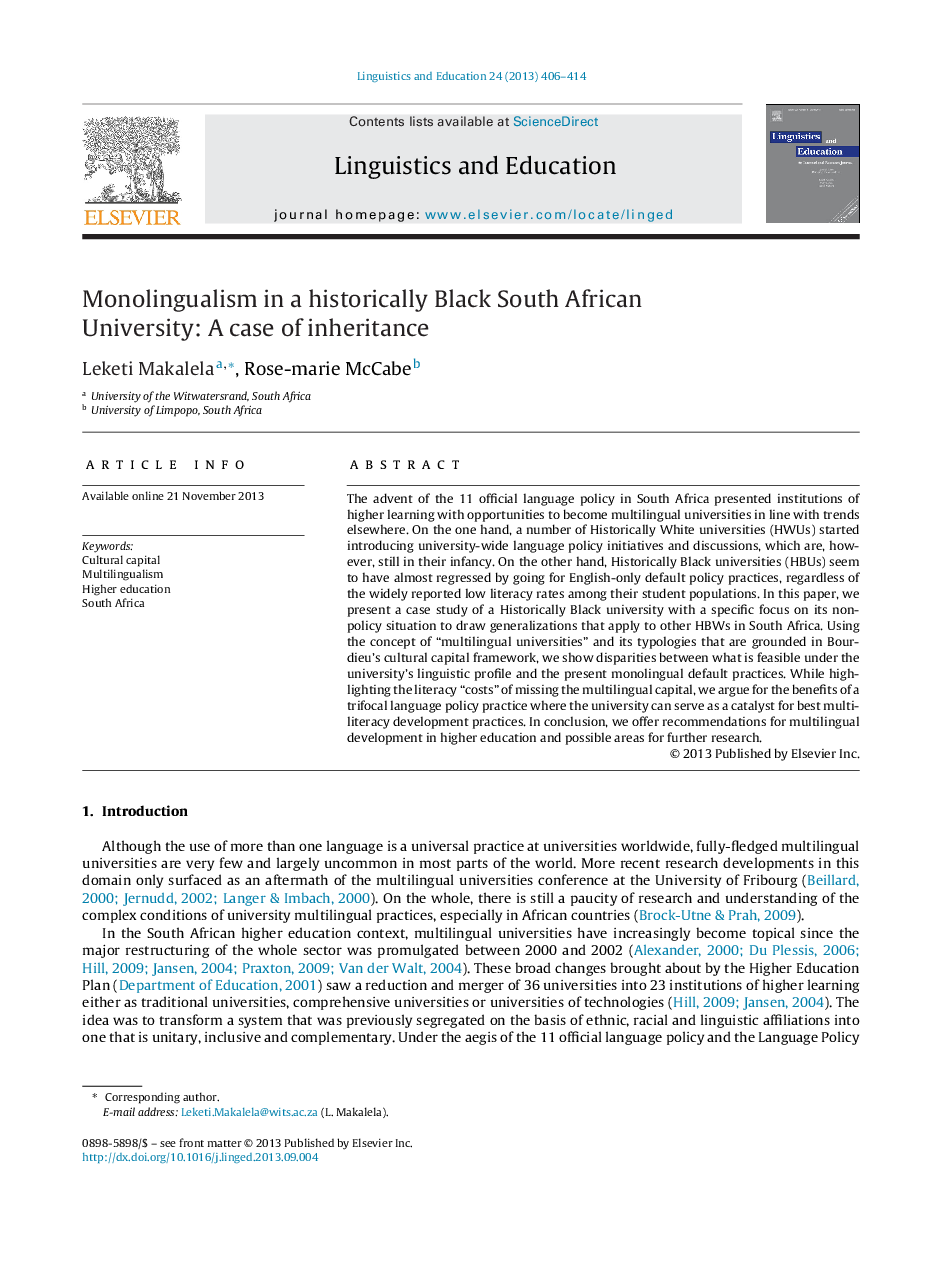| Article ID | Journal | Published Year | Pages | File Type |
|---|---|---|---|---|
| 10315869 | Linguistics and Education | 2013 | 9 Pages |
Abstract
The advent of the 11 official language policy in South Africa presented institutions of higher learning with opportunities to become multilingual universities in line with trends elsewhere. On the one hand, a number of historically White universities (HWUs) started introducing university-wide language policy initiatives and discussions, which are, however, still in their infancy. On the other hand, historically Black universities (HBUs) seem to have almost regressed by going for English-only default policy practices, regardless of the widely reported low literacy rates among their student populations. In this paper, we present a case study of a historically Black university with a specific focus on its non-policy situation to draw generalizations that apply to other HBWs in South Africa. Using the concept of “multilingual universities” and its typologies that are grounded in Bourdieu's cultural capital framework, we show disparities between what is feasible under the university's linguistic profile and the present monolingual default practices. While highlighting the literacy “costs” of missing the multilingual capital, we argue for the benefits of a trifocal language policy practice where the university can serve as a catalyst for best multi-literacy development practices. In conclusion, we offer recommendations for multilingual development in higher education and possible areas for further research.
Related Topics
Social Sciences and Humanities
Arts and Humanities
Language and Linguistics
Authors
Leketi Makalela, Rose-marie McCabe,
